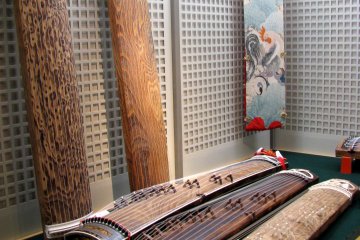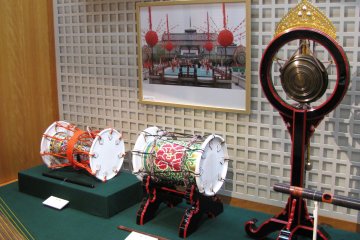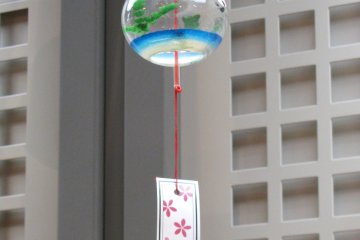Comparing Japanese national music with the music of other countries, you find some distinctive features. It often sounds like the sound of nature.
For centuries all magical rituals were accompanied with music as the part of religious ceremonies. These musical performances mostly were held in temples and was said to have started with the Buddhist priest Kenjun. What is remarkable is that a lot of old tunes were lost because of the absence of musical notation in Japan. Musical pieces were simply passed on from one generation to the next.
Myself, I enjoy listening to Japanese music quite a lot. In the Museum of Musical Instruments in Hamamatsu City I found a great collection of traditional Japanese instruments. After that visit I decided to learn more about them.

The shamisen is the most famous Japanese instrument and is considered to be the symbol of folk music. It came into Japan in the 16th century. A stringed instrument with three strings, the shamisen is made up of a wooden frame and animal skin, often snake. A plectrum is used to play it. The basic approach to playing is based on the plectrum: playing strings from top to bottom makes a drum-type sound, but playing in the opposite way gives a softer one. There are different styles and schools of shamisen play.

The biwa is also a stringed instrument of amygdaloid almond shape. It is about 1 meter in length. The biwa is much older than the shamisen, around 1300 years old. The biwa's frame is made from mulberry tree wood and its strings from silk. To play a plectrum is also used. There are many kinds of biwa that differ by sound and appearance.

Taiko (or daiko) are Japanese drums. Taiko are made of a wooden frame and skin on both sides. Sizes may vary from very small to huge ones requiring several drummers. There basically two types of taiko: shime-daiko which are tuned with the help of special cords and bolts, and byo uchi-daiko with a membrane fixed with nails and can’t be tuned.

The koto is an instrument with seven strings and was brought to Japan about 1000 years ago. It could be called a “noble” instrument because it was played at the Imperial Palace and respectable noblemen were expected to play it well. For playing koto nail overlays are used for three fingers.

The shakuhachi is a bamboo flute that originally came from China but soon became one of Japan's national instruments. There are about twenty kinds of shakuhachi. My favorite Japanese instrument, its sound recalls the view of layered mountains in the mysterious blue haze…
Along with above, the museum also displays gongs, bells and glass fuurins that ring with the wind.
Hamamatsu City's Museum of Musical Instruments is a lovely place for anyone who enjoys Japanese music or music in general.





















